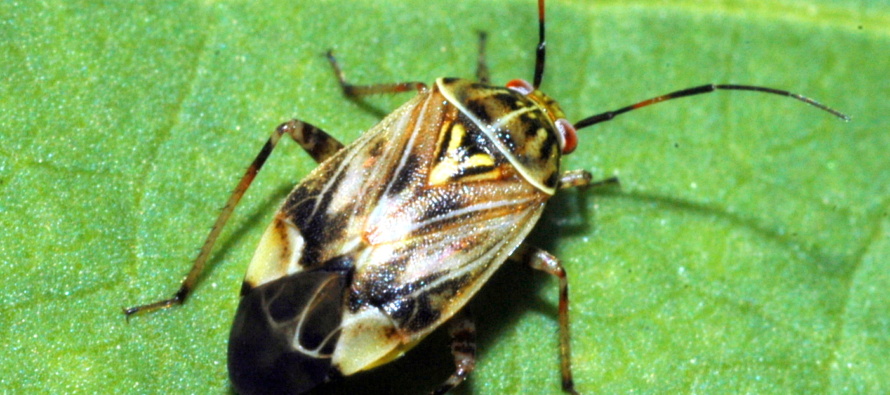Tarnished Plant Bug: Timing, Tools, and Tactics.

Related Articles
- Calcium and Magnesium For Mississippi Crops 1
- March 11 Precision Agriculture Workshop 0
- Ground Speed Affects Spray Droplet Deposition 0
Latest Tweets
As tarnished plant bug (TPB) populations continue increasing across Mississippi cotton acres, it’s important to revisit best management practices (BMPs) to protect yield and profitability. TPB continues to be the most economically significant insect pest in the region, and heavy reliance on foliar insecticides has driven up costs and resistance.
Best Management Practices (BMPs)
Field Selection & Layout
- Block cotton fields together.
- Avoid adjacent planting to corn or early soybeans.
- Manage wild hosts before flowering to reduce TPB population buildup.
Variety Selection & Planting Date
- Early maturing varieties and early planting reduce yield loss and insecticide use. Refer to Significance of Planting Date for Tarnished Plant Bug Management in Cotton for more information.
- Promote crop earliness through variety, planting date, and early pest/disease/weed control.
Fertilization
- Yields were maximized at 90-80 lb N/acre.
- Higher N rates (120–160 lb) required 1–1.5 additional insecticide sprays.
- Lower N inputs can reduce both costs and TPB pressure without penalizing yield.
- Note: Adjust for soil type, clay soils may require more N.
Irrigation
- Delaying irrigation can help reduce TPB pressure without sacrificing yield.
- Irrigating at first square led to more TPB sprays.
Insecticide Use & Application Practices
- Use Diamond during late squaring to early flower
- Highest yield increases are observed when adults migrate into cotton.
- Avoid rank cotton and delayed maturity.
- Control early-season pests (e.g., thrips) to improve square set.
- Use optimum application methods:
- Hollow cone nozzles provide best coverage.
- Maintain adequate GPA.
- Ensure timely applications.
- Rotate insecticide classes to manage resistance:
- Effective options: Transform, Acephate + Bifenthrin, Diamond tank mixes.
- Sequential applications improve control:
- Apply follow-up sprays within four to five days under heavy pressure.
- Two applications consistently outperformed one.
- Avoid multiple late-season sprays targeting top bolls:
- At the start of the fifth week of bloom, the TPB threshold can be doubled to help minimize late season applications.
Summary
TPB management in Mississippi cotton requires more than just foliar sprays. By integrating agronomic practices, optimized input use, and strategic insecticide programs, growers can reduce costs and maintain yields. As pressure builds this season, remembering timing and diversification are key.




Let me tell You a sad story ! There are no comments yet, but You can be first one to comment this article.
Write a comment